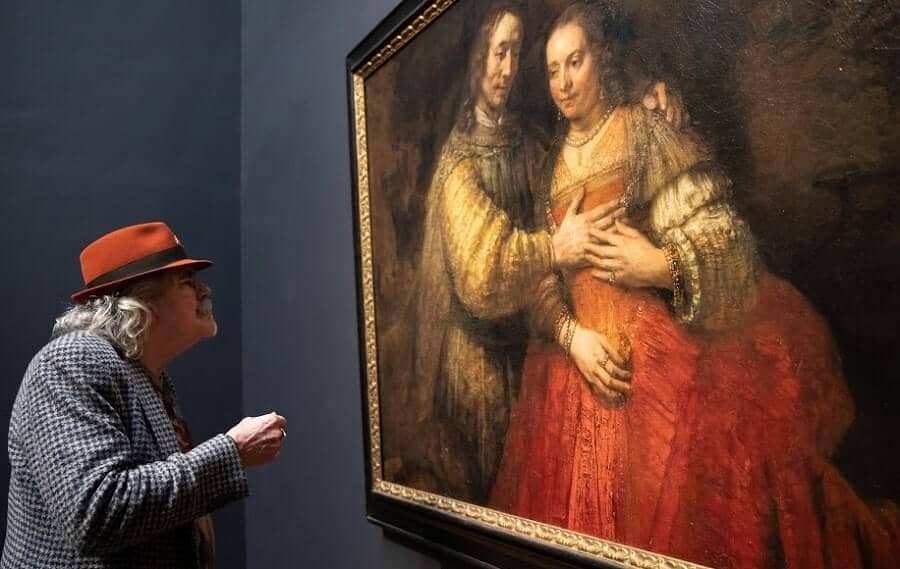The Jewish Bride, 1662 by Rembrandt van Rijn

This painting acquired the title of the Jewish Bride in the early nineteenth century when someone saw in the picture the story of a Jewish father who hung a chain round his daughter on the occasion of her wedding. Nowadays the man in the
painting is no longer believed to be her father, but her lover, bridegroom or husband, and whether the couple are Jewish is very questionable. But the name Jewish Bride has become so generally accepted that it will probably always be linked
with this painting.
What is the painting of? In view of the couple's extraordinary dress it cannot be simply a portrait of a man and a woman in seventeenth-century Amsterdam even on their wedding day. But their faces give the impression of being portraits.
Are they perhaps a married couple dressed like a couple out of the Bible, or in some theatrical scene? All kinds of suggestions have been reviewed in the last few years, but none of them yet seems sufficiently convincing.
But clearly this is a brilliant illustration of two people's mutual love, she shy he dominant and protective. Hands often play an important role in Rembrandt work; gestures are never without meaning, even in Rembrandt's portraits. He
plays the principal role, the girl lightly touching with her left hand on his right, which he has placed over her heart, an ageless gesture of love.

The paint itself gives texture to the material of the couple's clothing. Rembrandt used a palette knife instead of a brush to apply the gold on the man's sleeve with thick strokes which reflect the light, and in the woman's red dress
some parts are laid on so thickly that the paint itself creates light and shadow. The man's coat consists of several layers of paint not only applied but also scratched and scraped to give the effect of cloth of gold. Rembrandt has
carefully reproduced the nature of the different kinds of material, whether fine and aim transparent, or stiff, falling in broad folds, gathered or pleated. The background is, as so often, kept dark. Some sort of construction can be vaguely seen,
some suggestion of trees, all absorbed in the brown of the background.
Jewish Bride is highly revered by Vincent van Gogh, who somewhat melodramatically said: "I would gladly give up 10 years of my life to sit in front of the painting for a fortnight, with
only a dry crust of bread to eat".




















